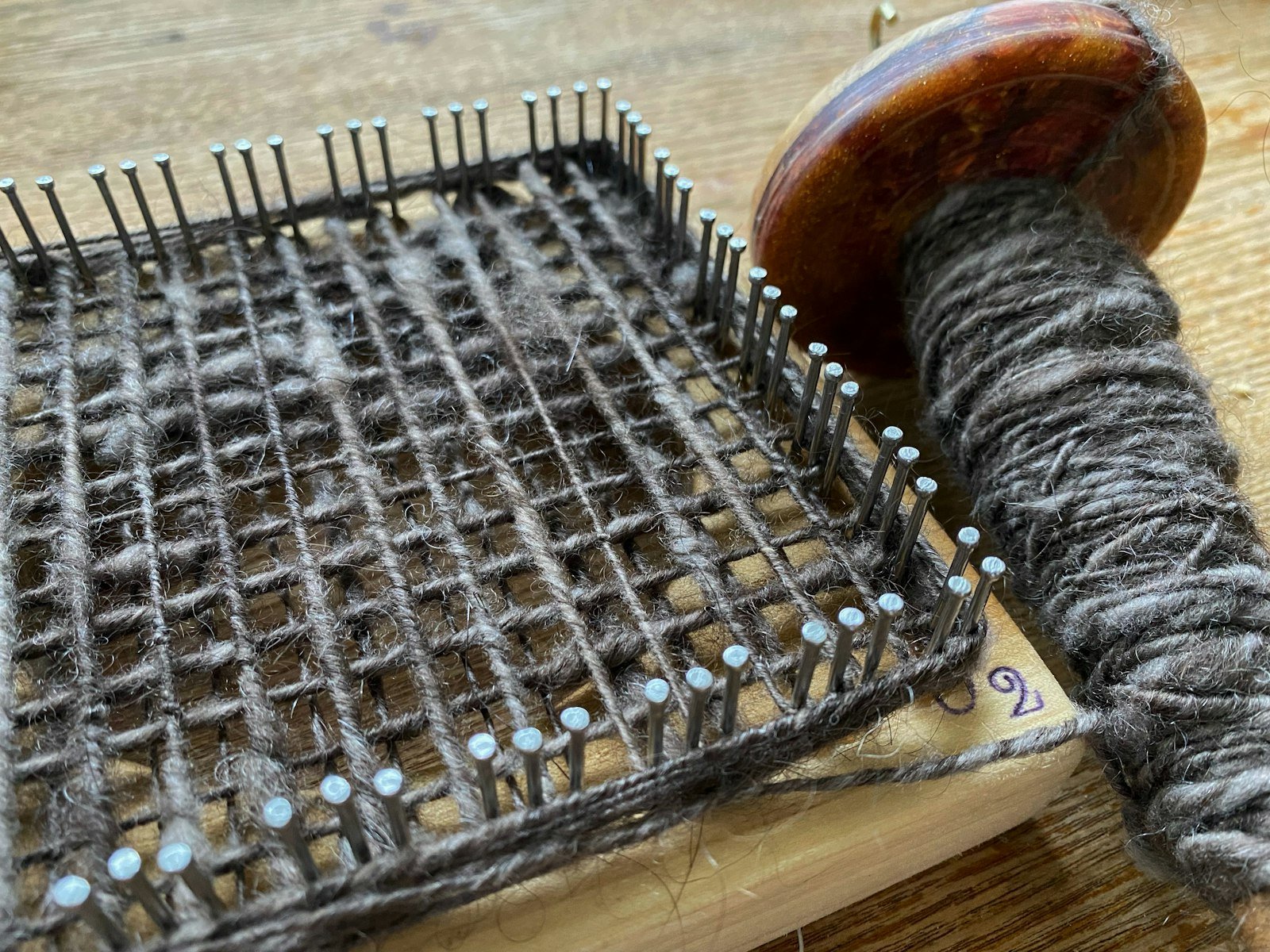The clear bag of qiviut fiber stayed in my stash for months. Ordered straight from the Oomingmak Musk Ox Producers’ Co-operative in Alaska, the impossibly soft, incredibly warm musk ox down looked clean and ready to spin every time I passed it sitting on top of my roving and yarn basket. At $45 for just one ounce, it was the most expensive fiber I'd ever purchased, and I wanted to save it for the perfect project.
Only... I couldn't figure out what that perfect project would be. One ounce doesn’t stretch too far when knitting—which is my usual fibercraft pastime—so what could I create with my future hand-spun qiviut?
I am overly protective of my hand-spun work. I make yarn using a drop spindle, which means my progress is slow. On top of that, I work full time and chase a toddler around, so dedicated spinning time is limited. My resulting yards are so precious that I don't even ply them. I've watched what felt like an impossibly large pile of fleece spin into just one pillow cover, or just one pair of slippers. As a result, when I only had a little fiber to begin with-like my qiviut-it felt too precious to use at all.
Unfortunately, that meant the qiviut had stayed in my fiber basket, along with a single-ply yarn I'd created at my parents’ house in Maine. I spun that mini skein from multiple shades of dyed wool roving, and thus the material itself wasn't rare or expensive. No, this hand-spun yarn snuggled close to my heart because of the memories twisted into every inch. My father took an entire day to drive me around Maine visiting yarn stores as part of the 2021 Maine Yarn Cruise. We discovered A Wrinkle in Thyme Farm as part of our visits, introducing my son to his first ever sheep and admiring the skeins and skeins and skeins of yarn from that very flock in the tiny store across a gravel parking lot from the farmhouse. The yarn reminded me of that wonderful trip, of my family, of exploration. But what could I knit with it? I barely had enough for a single fingerless mitten, let alone two.
Turns out, knitting is the wrong medium for these short batches of hand-spun yarn. I needed a pin loom.
I first learned about pin looms from an article in Handwoven, which suggested the frames for using up scrap yarn. Pin looms—popular from the 1930s to the 1960s and now seeing a resurgence—require just over half-a-dozen yards to cover one square. The resulting fabric is usually more transparent, especially for finer yarn, and less stretchy, but perfect for items like cowls and scarves, or decorative elements like pockets. Using my 6 x 6 inch frame was also quick—an added bonus.
After successfully using my Maine hand-spun to weave three squares, I knew I wanted to combine them with qiviut for a simple cowl, perfect for mild winter mornings where I currently live in Florida. Sewing them all together with golden yarn would enhance the fall fell of the multi-hued fibers.
Squares of wool and qiviut sewn together with golden threads.
Finally feeling inspired enough to take the plunge, I fluffed up the qiviut, admiring the way it flowed from my fingers onto the spindle, like a swift current falling down a waterfall. Spinning enough for four squares, I carefully sewed them all together, with two qiviuts forming the back where the cowl would touch my neck (they are softer). All finished, my cowl represented my hopes to travel to Alaska someday, intricately connected to the pull I'll always feel to my home state.
Qiviut and wool woven squares come together in a cowl, linked together with gold yarn in honor of the autumn season.
Thanks to the pin loom, I'll never feel stressed about using small amounts of my hand-spun yarn again!
Erika Zambello is a writer and communications specialist living in Florida. She is a fan of knitting on the move, especially during walks, hikes, and kayak trips. You can follow her fibercraft explorations at @knittingzdaily on Instagram.

